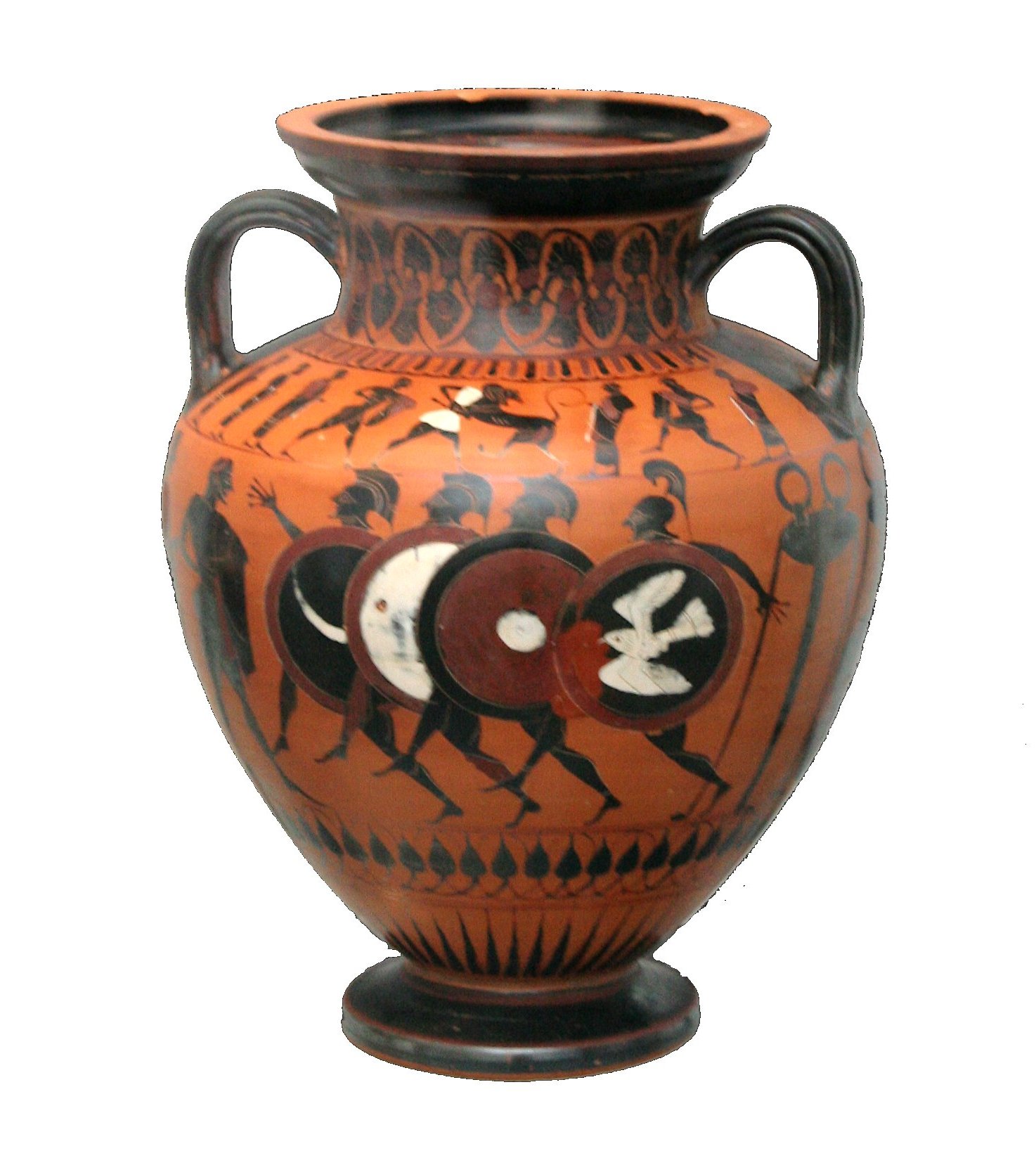бЉАѕГѕАќѓѕВ on:
[Wikipedia]
[Google]
[Amazon]
 An ''aspis'' (; : aspides, ) or ''porpax'' shield was the heavy wooden
An ''aspis'' (; : aspides, ) or ''porpax'' shield was the heavy wooden
Classical Greek Shield Patterns
Greek shields Ancient Greek military terminology
 An ''aspis'' (; : aspides, ) or ''porpax'' shield was the heavy wooden
An ''aspis'' (; : aspides, ) or ''porpax'' shield was the heavy wooden shield
A shield is a piece of personal armour held in the hand, which may or may not be strapped to the wrist or forearm. Shields are used to intercept specific attacks, whether from close-ranged weaponry like spears or long ranged projectiles suc ...
used by the infantry in various periods of ancient Greece
Ancient Greece () was a northeastern Mediterranean civilization, existing from the Greek Dark Ages of the 12thвАУ9th centuries BC to the end of classical antiquity (), that comprised a loose collection of culturally and linguistically r ...
.
Construction
An ''aspis'' was deeply dished and made primarily of wood. Some had a thin sheet ofbronze
Bronze is an alloy consisting primarily of copper, commonly with about 12вАУ12.5% tin and often with the addition of other metals (including aluminium, manganese, nickel, or zinc) and sometimes non-metals (such as phosphorus) or metalloid ...
on the outer face, often just around the rim. The convention was to decorate the shield.
The ''aspis'' measured at least in diameter and weighed about , and it was about thick. This large shield was made possible partly by its shape, which allowed it to be supported comfortably on the shoulder. The revolutionary part of the shield was, in fact, the grip. Known as an ' grip, it placed the handle at the edge of the shield and was supported by a leather or bronze fastening for the forearm at the center, known as the porpax. This allowed hoplites more mobility with the shield, as well as the ability to capitalize on their offensive capabilities and better support the phalanx
The phalanx (: phalanxes or phalanges) was a rectangular mass military formation, usually composed entirely of heavy infantry armed with spears, pikes, sarissas, or similar polearms tightly packed together. The term is particularly used t ...
. The shield rested on a man's shoulders, stretching down to the knees; and it had a convex face, like that of a shallow bowl.. It was theorized they were designed for a mass of hoplites to push forward into the opposing army, a move called '' othismos''. The convex face would allow the bearers to continue breathing (and therefor pushing) while being crushed from ahead and behind. An enemy soldier without this innovation would suffocate, then faint or panic; though this is a disputed theory.
Such shields did not tend to survive the passage of time very well, and only one ''aspis'' has survived into modernity with sufficient preservation to allow us to determine the details of its construction: this shield is called the "Bomarzo" or "Vatican" shield, and it is currently located in the Vatican
Vatican may refer to:
Geography
* Vatican City, an independent city-state surrounded by Rome, Italy
* Vatican Hill, in Rome, namesake of Vatican City
* Ager Vaticanus, an alluvial plain in Rome
* Vatican, an unincorporated community in the ...
, within the Museo Gregoriano Etrusco. It was discovered in 1830 near Bomarzo in Lazio
Lazio ( , ; ) or Latium ( , ; from Latium, the original Latin name, ) is one of the 20 Regions of Italy, administrative regions of Italy. Situated in the Central Italy, central peninsular section of the country, it has 5,714,882 inhabitants an ...
, central Italy.
See also
*Ancient Greek warfare
Warfare occurred throughout the history of Ancient Greece, from the Greek Dark Ages onward. The Greek 'Dark Ages' drew to an end as a significant increase in population allowed urbanized culture to be restored, which led to the rise of the city-s ...
*''Clipeus
In the military of classical antiquity, a ''clipeus'' (; Ancient Greek: Aspis, бЉАѕГѕАќѓѕВ) was a large shield worn by the Ancient Greece, Greek Hoplite, hoplites and Ancient Rome, Romans as a piece of defensive armor, which they carried upon t ...
'' вАУ a similar shield used by the Romans
*''Peltast
A ''peltast'' (, ) was a type of light infantry originating in Thracians, Thrace and Paeonia (kingdom), Paeonia and named after the kind of shield he carried.
'' вАУ a light infantry
Light infantry refers to certain types of lightly equipped infantry throughout history. They have a more mobile or fluid function than other types of infantry, such as heavy infantry or line infantry. Historically, light infantry often fought ...
man using a lighter ''pelte'' shield
*'' Thyreophoroi'' and '' thorakitai'' вАУ medium infantrymen using '' thyreos'' shields
References
{{ReflistExternal links
Classical Greek Shield Patterns
Greek shields Ancient Greek military terminology